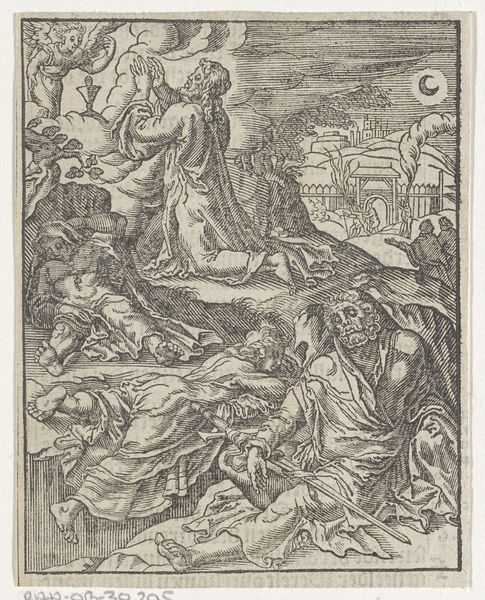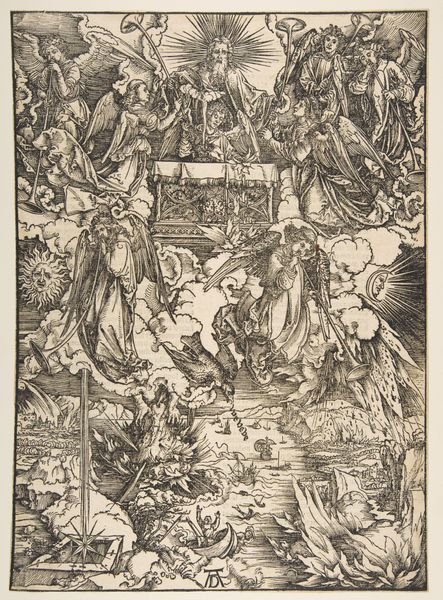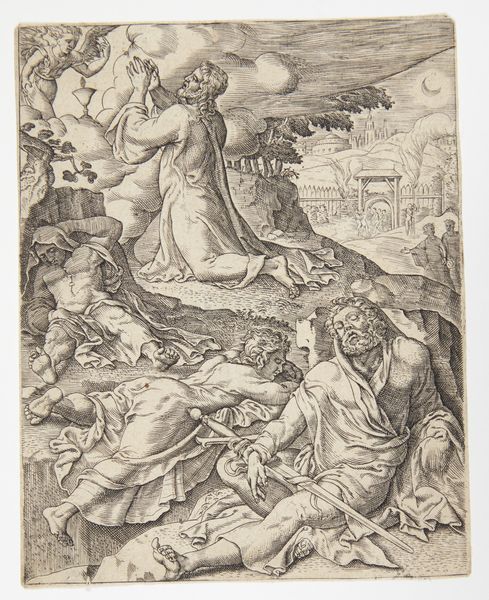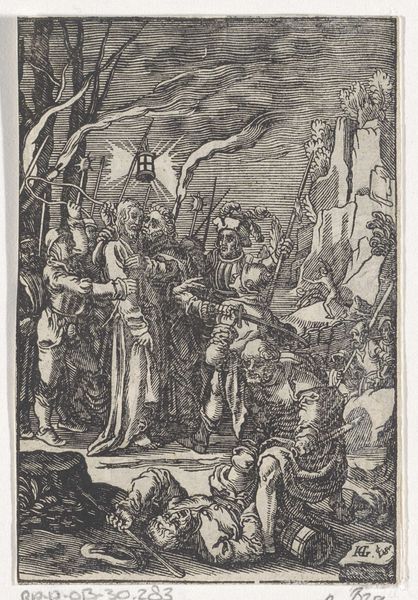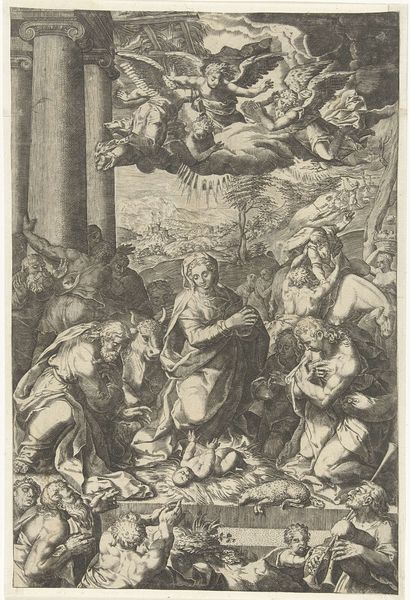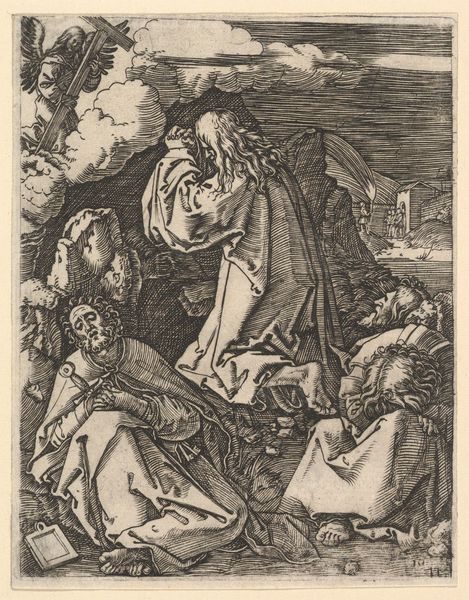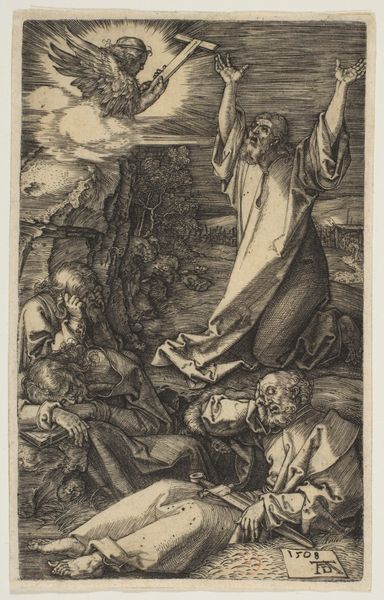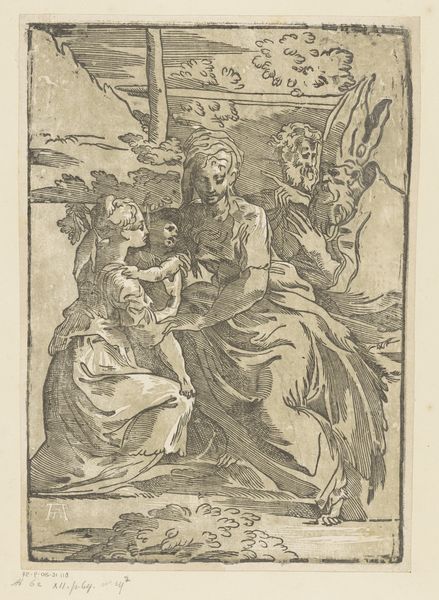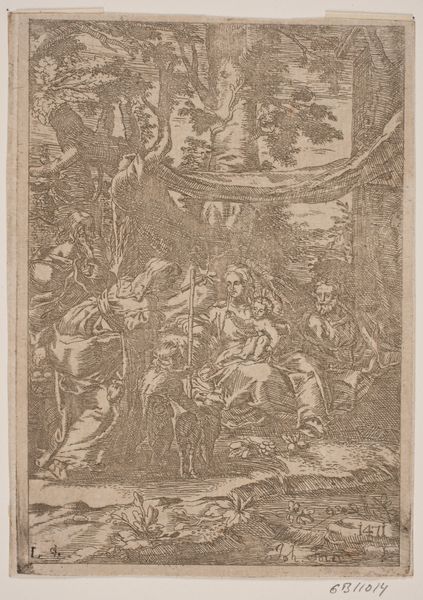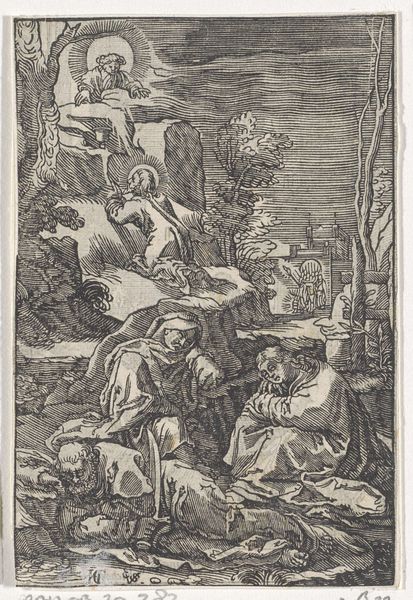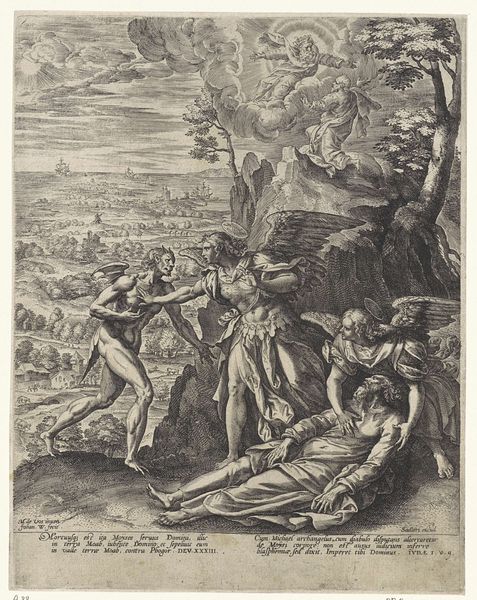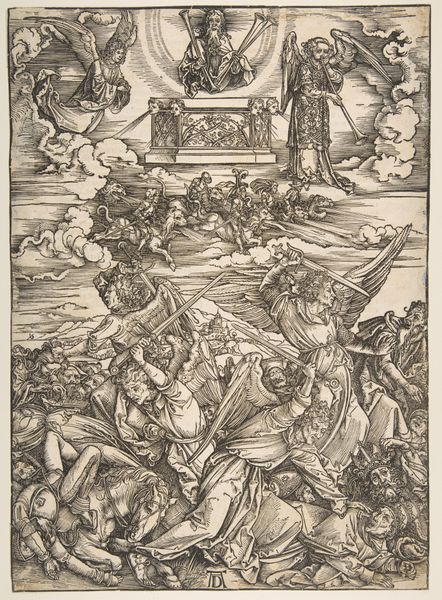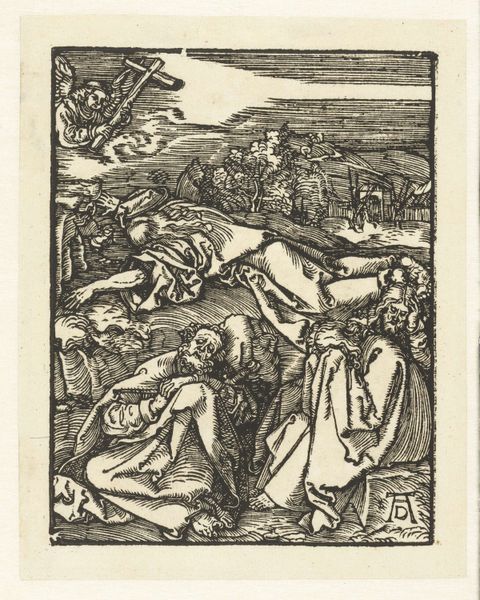
drawing, print, ink
#
tree
#
drawing
#
garden
#
ink drawing
#
ink painting
# print
#
landscape
#
figuration
#
11_renaissance
#
ink
#
pencil drawing
#
history-painting
#
northern-renaissance
#
angel
#
christ
Dimensions: Sheet: 8 11/16 × 6 1/8 in. (22 × 15.6 cm)
Copyright: Public Domain
Curator: Today we're looking at "Agony in the Garden," an ink drawing and print by Albrecht Dürer, created in 1515. It's currently held at the Metropolitan Museum of Art. Editor: It strikes me immediately as very turbulent, almost claustrophobic. The dense linework and dark ink create a heavy atmosphere. Curator: The emotional intensity is certainly palpable. Dürer masterfully uses the medium to depict Christ's anguish in the Garden of Gethsemane before his arrest. The historical context here is crucial: consider the rising social tensions and religious reforms during Dürer's time. The print medium made such emotionally charged imagery widely accessible. Editor: Indeed. Looking closer at the composition, I see how the sharp, angular lines of the rocks contrast dramatically with the softer, more fluid lines used for Christ's robes and hair. The dynamic tension in the lines emphasizes Christ's inner turmoil. Curator: Exactly, and it is a piece made for dissemination. The mass production of such imagery allowed for personal meditation, aligning with the period's shift toward individualized faith. The figure of the angel appearing above Christ isn't simply a comforting presence; it’s an endorsement, sanctioned by heaven and visible to all those who bought the artwork. Editor: Also notice how Dürer plays with light and shadow, creating depth and drawing the eye towards Christ's face, despite the chaotic background. The light seems to emanate from him, doesn’t it? Curator: Yes, the symbolic use of light adds another layer of interpretation. It shows a divine sanction that might provide comfort to many buyers during tumultuous periods in German religious life. This moment in the Garden has powerful associations of individual suffering, amplified during that period, which allowed people to deal with the realities they experienced day to day. Editor: Seeing it in this context enriches my appreciation for how Dürer melds formal elements with a message that resonates powerfully beyond its initial creation. It is really an amazing artwork! Curator: And thinking about its original audience makes me think about contemporary uses of political and religious art.
Comments
No comments
Be the first to comment and join the conversation on the ultimate creative platform.
